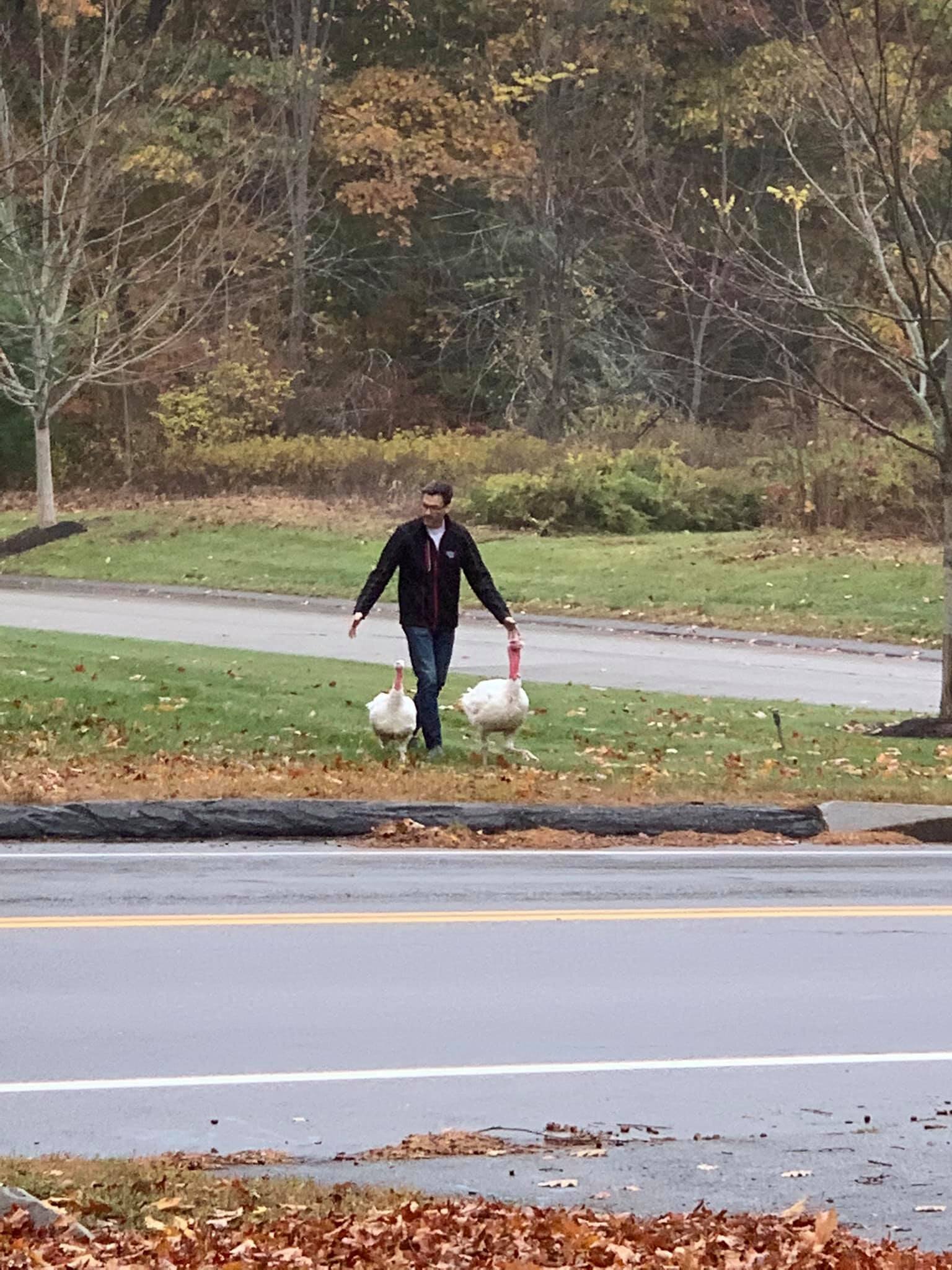The cut feet not only made the potential-prosciutto harder to hang (you can cut a slit right behind the ankle tendon that makes a perfect place to thread a rope), and less lovely to present, but it doesn't actually affect the meat. So I went ahead with the cure. There's a formula about how long to salt the ham before hanging, based on weight and thickness, and how many letters from Leondardo da Vinci's name also appear in your name. But it is measured in weeks. The next step is to bag it (to keep the flies off for a while longer) and hang it to air dry until your 4th grader is ready for 6th grade.
Unfortunately, because our pigs were ready for slaughter so early in the year, I was starting the cure during the hottest week of the summer. It was in the 90's pretty much every day. And while the basement of this old farmhouse tends to stay a little cooler than that, it is not hermetically sealed. Or air conditioned. And that extra cut at the top of the leg with the bone sticking out provided for a difficult to seal entrance for more bacteria. It was kind of like a marquis board flashing: "HEY E.COLI! I GOT THE THING THAT YOU LIKE RIGHT HERE!" There's a reason that Pa Ingalls waited until the nights were cold and the leaves were falling to slaughter his pigs.
After ten days or so, my meat started to spontaneously juice.
Juiced meat is not a good sign. There's a book I read and keep handy on the shelf called "Ham: An obsession with the hindquarter". (I raise pigs in my backyard so that I can put their hindlegs in a box in my basement. Of course I own this book). In it, the author answers the question, "how do I know if my ham has gone bad" by explaining:
Trust me. You'll know.
He was right.
Sigh... ah well. The bacon's still good, and I have a two prosciuttos from past pigs that will soon be ready. Therefore, I hereby declare this the year of salami. I've got plenty of trim, and nothing but time to get it right.
Meanwhile, here's a picture of Apples, taking a leisurely soak.





















